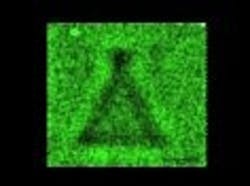Terabyte optical discs goal of Case Western Reserve University startup
Cleveland, OH--Folio Photonics (see http://youtu.be/kbFcvECR1a4)—a startup business launch by a Case Western Reserve University (CWRU) physics professor and his graduate student—aims to make an optical data storage disc that holds 1 to 2 terabytes of data; the equivalent of 1,000 to 2,000 copies of Encyclopedia Britannica or the content of 50 Blu-ray discs. As an alternative to storing data on energy-wasting magnetic discs or cumbersome magnetic tapes, Folio Photonics is using optical technology first developed by the Center for Layered Polymeric Systems at Case School of Engineering to make an optical film with 64 data layers.
Kenneth Singer is the Ambrose Swasey professor of physics at CWRU, and co-founder of Folio Photonics. "A disc will be on the capacity scale of magnetic tapes used for archival data storage," said Singer. "But, they’ll be substantially cheaper and have one advantage: you can access data faster. You just pop the disc in your computer and you can find the data in seconds. Tapes can take minutes to wind through to locate particular data."
Using optical data storage technology first developed by the Center for Layered Polymeric Systems at Case School of Engineering, Singer and Valle, in collaboration with their colleague Professor Eric Baer, make an optical film with 64 data layers.
To make the film, a thick, putty-like flow of polymers is repeatedly divided and stacked, then spread into a film and rolled onto a spool. They estimate they can make a square kilometer of film in an hour. The researchers then cut and paste film onto the same hard plastic base DVDs and Blu-rays are built on. Valle said they need to make only slight adjustments to a standard disc reader to enable it to probe and read the data on each layer without interference from layers above or below.
The CWRU scientists aren’t the only ones pursuing terabyte-storage discs (see also an in-depth article on Optical Data Storage in the Photonics Applied series of Laser Focus World’s October issue). Other companies like Access Optical Networks (AON) are pursuing high-capacity optical storage and looking into holographic technology, which typically requires two lasers to write the data and will require a whole new writer/reader. Singer said, "Ours has the advantage of lower manufacturing costs and is more compatible with current readers and writers."
Folio Photonics is also trying to fill increasing needs in the fields of pathology and genomics. Pathologists are starting to store not just slides of tissues but the digital images they make, which can be manipulated to gather more information about disease or damage. With the plummeting costs of genetic sequencing, companies and institutions are generating enormous amounts of data and are seeking alternative ways to archive the data.
Folio Photonics is the third company to come out of the Center for Layered Polymeric Systems and will be based in the Cleveland area. The company hopes to have prototype discs and readers to show within a year.
SOURCE: Case Western Reserve University;http://blog.case.edu/think/2012/10/10/making_computer_data_storage_cheaper_and_easier

Gail Overton | Senior Editor (2004-2020)
Gail has more than 30 years of engineering, marketing, product management, and editorial experience in the photonics and optical communications industry. Before joining the staff at Laser Focus World in 2004, she held many product management and product marketing roles in the fiber-optics industry, most notably at Hughes (El Segundo, CA), GTE Labs (Waltham, MA), Corning (Corning, NY), Photon Kinetics (Beaverton, OR), and Newport Corporation (Irvine, CA). During her marketing career, Gail published articles in WDM Solutions and Sensors magazine and traveled internationally to conduct product and sales training. Gail received her BS degree in physics, with an emphasis in optics, from San Diego State University in San Diego, CA in May 1986.
